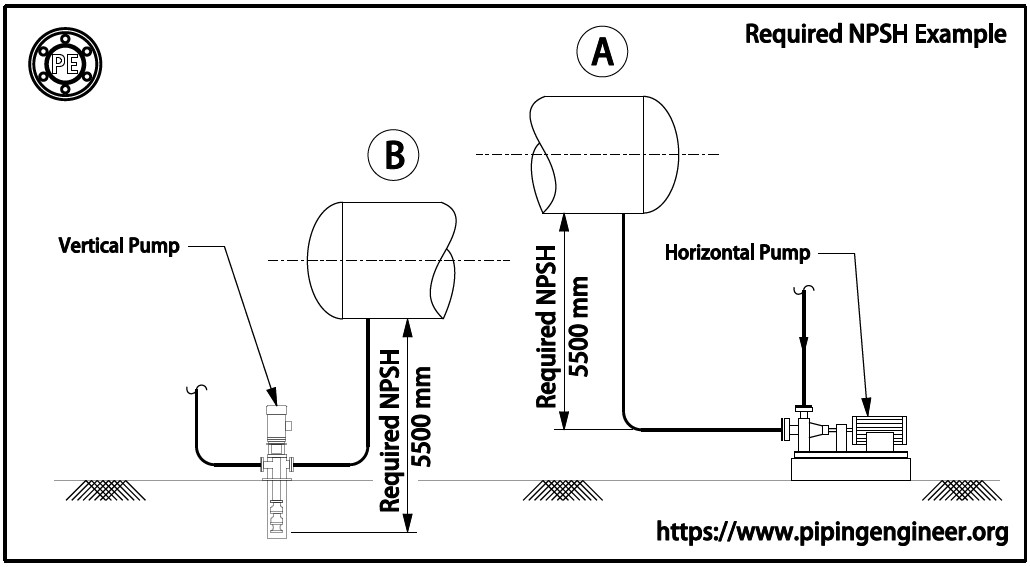NPSH can be defined as two parts:
NPSH Available (NPSHA): The absolute pressure at the suction port of the pump.
AND
NPSH Required (NPSHR): The minimum pressure required at the suction port of the pump to keep the pump from cavitating.
NPSHA is a function of your system and must be calculated, whereas NPSHR is a function of the pump and must be provided by the pump manufacturer. NPSHA MUST be greater than NPSHR for the pump system to operate without cavitating. Put another way, you must have more suction side pressure available than the pump requires.
An example of how to deal with a typical NPSH problem is shown in below. The required NPSH in this example is 5,500 mm.

If a horizontal pump is used, the bottom tangent line of vessel A must be a minimum of 5,500 mm above the centreline elevation of the shaft.
If a vertical pump, is used, the vessel Bottom tangent line is located closer to grade because NPSH is calculated from the bottom impeller of the pump located below grade.
Although vertical pumps require less of at vessel support structure and possibly less piping, they are more expensive to buy and maintain.
Therefore, a horizontal pump application is at more desirable solution in this instance.
Vertical pumps are better used to draw suction from large surface condensors that service large compressors.
